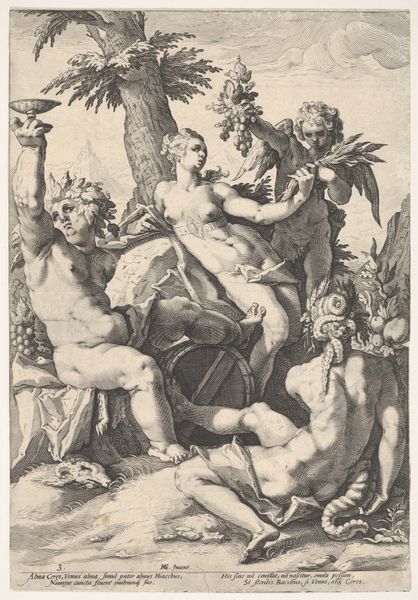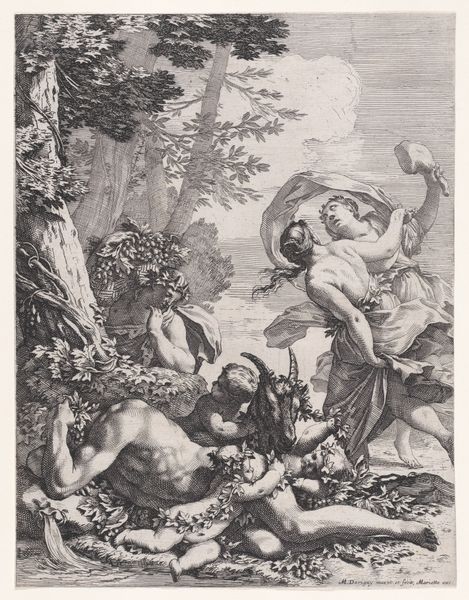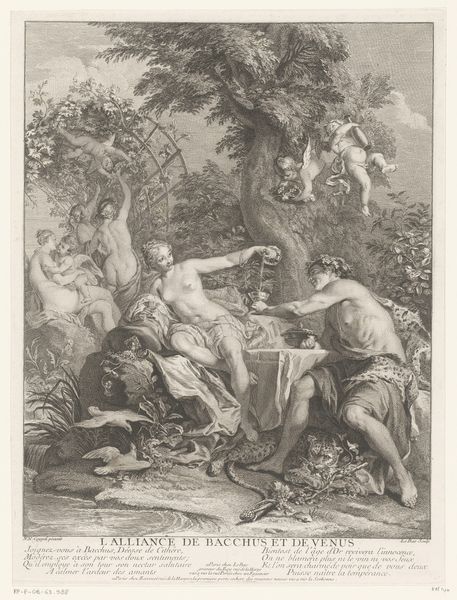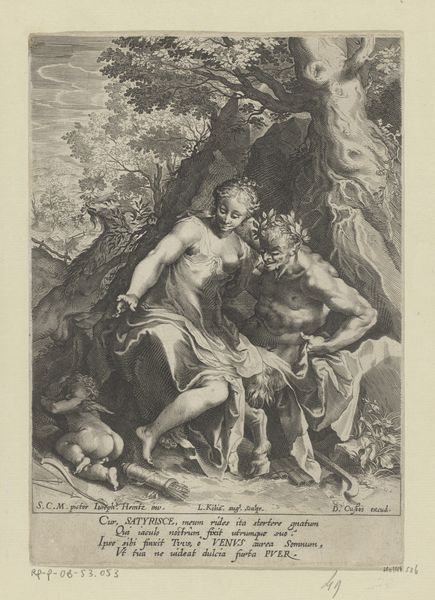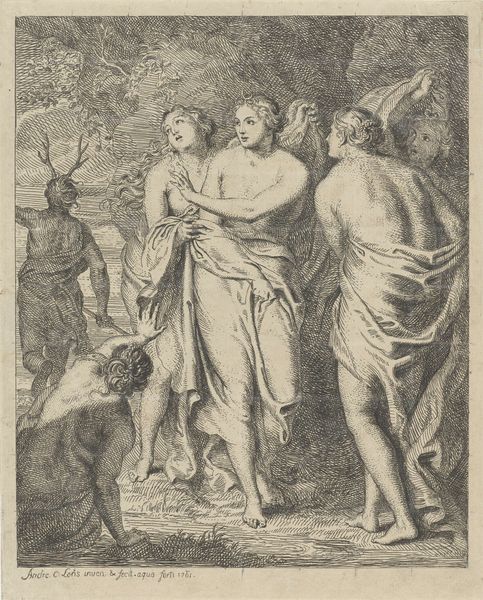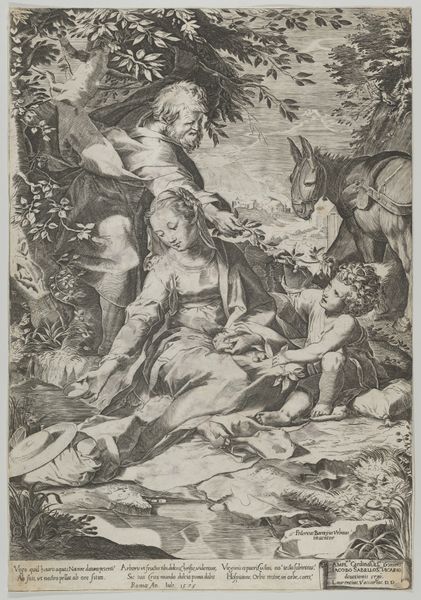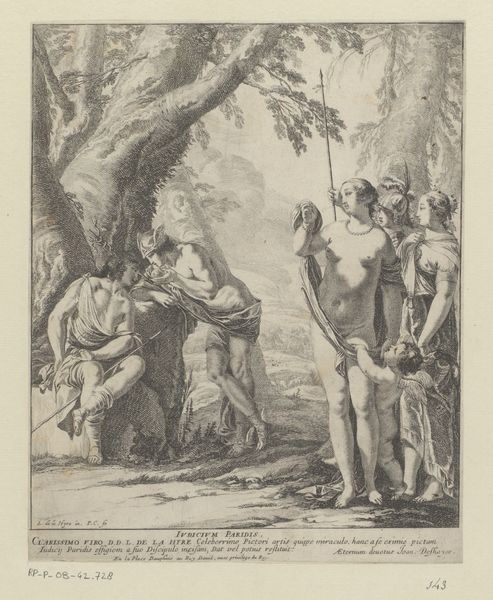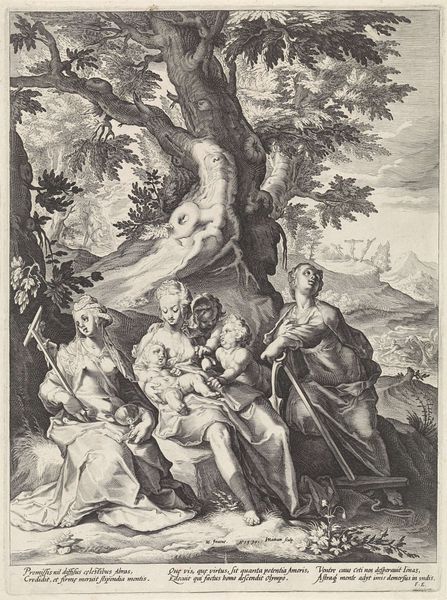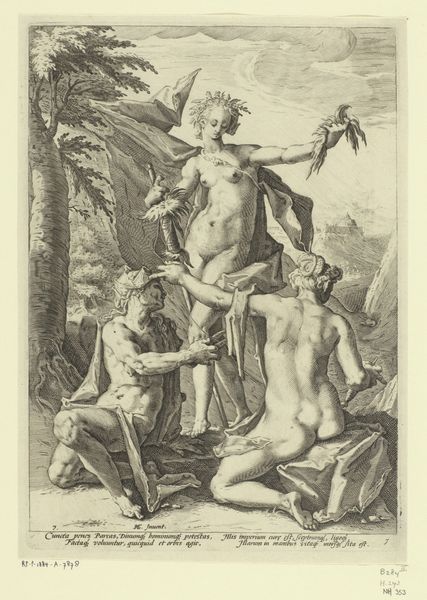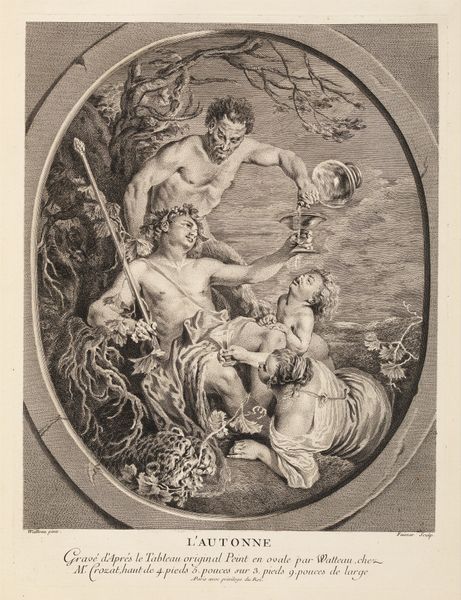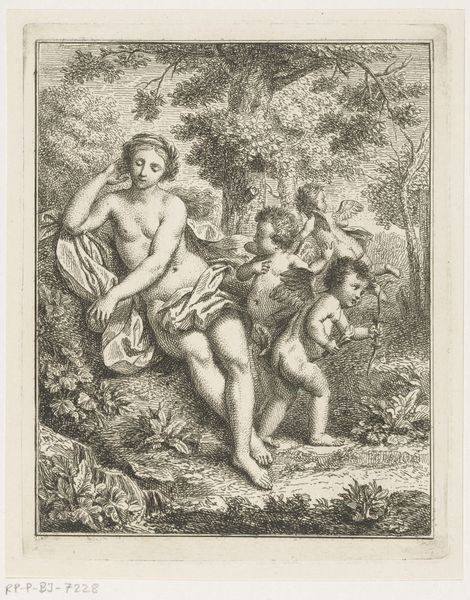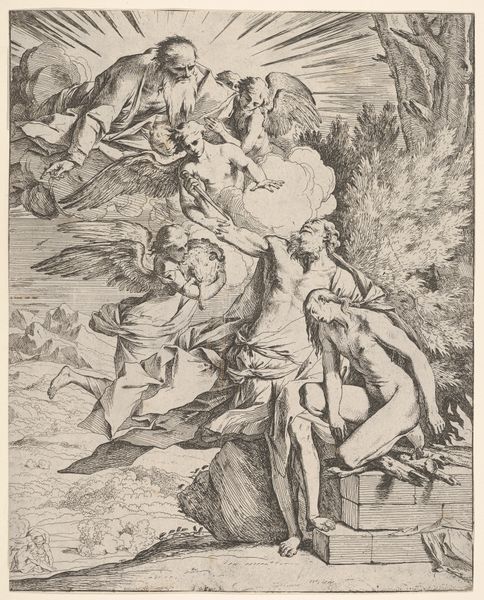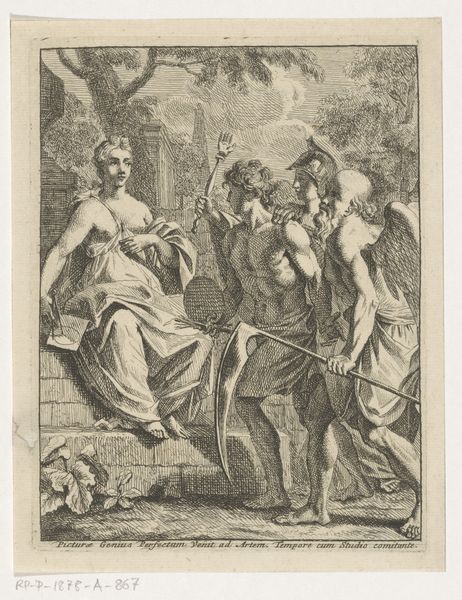
Putti and bacchantes at the bottom of a tree 1636 - 1665
0:00
0:00
drawing, print
#
drawing
#
allegory
#
baroque
# print
#
landscape
#
figuration
Dimensions: Sheet (Trimmed): 9 15/16 × 7 11/16 in. (25.3 × 19.6 cm)
Copyright: Public Domain
Curator: Here we have "Putti and Bacchantes at the bottom of a tree" by Michel Dorigny, a drawing and print from sometime between 1636 and 1665. Look closely at how Dorigny captures the scene in such detail using delicate lines. What's your initial take on this one? Editor: It feels... whimsical, yet oddly unsettling. The frolicking putti are sweet, but there’s a strange heaviness to the reclining figure and the overgrown tree. It’s playful, but also bordering on decadent. Curator: You've touched on an interesting tension. The piece is firmly within the Baroque tradition, so it’s crucial to note how allegory was frequently employed to convey moral and philosophical ideas. Bacchantes and putti often appear as symbols of earthly pleasures. The overgrown nature could symbolize abundance, while the putti evoke themes of innocence and playfulness. Editor: And yet, this image exists within a historical context steeped in hierarchy and power. Are we really just talking about innocent pleasure? Or could the opulence hint at the decadence of the elite? The way the bacchantes are depicted almost seems to invite a male gaze. Curator: Well, of course the context is important. Dorigny operated within a specific social structure; such images reinforced ideas about wealth, leisure, and idealized forms, also reflecting how institutions shaped what kind of art was made and celebrated. Editor: Agreed. Looking through a contemporary lens, one can't help but question the romanticization. Who benefitted from the narrative it presents? Did it normalize particular expectations about body, gender, and the role of nature? It definitely asks, in the current social climate, whether such an aesthetic should still be seen as a value or standard. Curator: Your modern perspective really illuminates new possibilities in seeing this work. These kinds of pieces reveal much more about the people and context that produced them than it seems. Thank you for sharing such a nuanced understanding. Editor: My pleasure. Engaging with art like this is a powerful way of confronting history and considering our present. Hopefully, visitors leave with as many questions as answers.
Comments
No comments
Be the first to comment and join the conversation on the ultimate creative platform.
